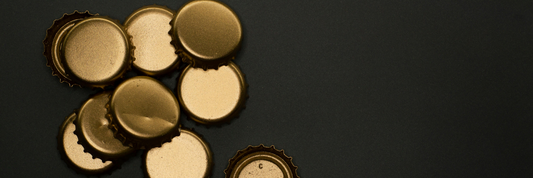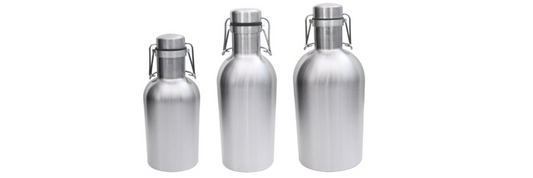Wood is now a popular material for kitchen tools. However, which of the numerous wood types available is best for the kitchen? Find out in the following
What Are Common Kitchen Utensils Made from Wood?
Numerous everyday cooking items are made from wood, each with a distinct function and appearance. Here are a few of the most well-known.
Birchwood: A Versatile and Sustainable Material in Daily Life
Basic Utensils:
- Spoons: Available in various sizes and shapes, perfect for stirring, mixing, and serving
- Spatulas: Used for flipping and scraping, often with a flat blade or angled edge.
- Turners: Ideal for lifting delicate items like pancakes and fish.
- Whisk: Great for whipping cream, eggs, and batter. Bamboo whisks are lightweight and efficient, while wooden whisks with round handles are comfortable to use.
- Ladles: Deep bowls make them perfect for scooping soups, sauces, and stews.
- Cutting boards: Wood cutting boards are popular for their gentle touch on knives and natural antibacterial properties.
Specialty Utensils:
- Rolling pins: Used for dough and pastry, available in various styles like French tapered pins or dowel pins. Choose a dense wood like maple or oak for even rolling.
- Pasta spoons: Featuring elongated handles and slotted bowls, they are perfect for draining and serving pasta.
- Salad servers: Elegant utensils for serving salads and other dishes.
- Rice paddles: Used for stirring and fluffing cooked rice.
- Mortar and pestle: Great for grinding spices and herbs.
Why Need to Choose Right Wood for Kitchen Utensils?
Selecting the proper wood for wooden cutlery can enhance your cooking experience, prolong the life of the tools you use, and maintain the food's safety and health.
Improved Cooking Experience:
- Functionality: Woods with specific properties, like heat resistance or anti-bacterial qualities, make specific tasks easier and more efficient. A heat-resistant spatula won't melt near your hot pan, while an anti-bacterial wooden spoon won't harbor bacteria in your salad.
- Different woods have different weights and textures. Choosing a wood that feels comfortable in your hand makes using the utensils more enjoyable and less tiring during long cooking sessions.
Increase the lifespan of your cooking utensils: Choosing the proper wood guarantees that your utensils last longer by resisting wear and tear. You won't have to replace them as frequently, saving you money and reducing irritation.
Health and Safety:
- Food Safety: Certain woods, like olive wood, have natural anti-bacterial properties, reducing the risk of cross-contamination. This is especially beneficial when handling meats or other delicate ingredients.
- Non-Stick Cookware Protection: Wooden utensils are gentle on non-stick surfaces, unlike metal utensils which can scratch and damage the coating. This keeps your cookware healthier and prevents harmful chemicals from leaching into your food.
What Are Features of Wood to Make Kitchen Utensils?
Popular Wood Choices for Kitchen Utensils
When it comes to wood for kitchen equipment, there are two types: softwoods and hardwoods.
Hardwoods are known for their toughness, resistance to warping and cracking, and capacity to withstand heat. These are a few common hardwoods:
- Teak: King of durability, naturally water-resistant, stain-resistant, and anti-bacterial
- Walnut: Beautiful grain and rich color, handles heat and moisture well, requires regular oiling.
- Maple: Hard, dense, and food-safe, versatile for various tasks, requires occasional oiling.
- Oak: Strong and sturdy, classic and affordable, not as water-resistant as some, susceptible to warping and staining if not properly seasoned.
- Cherry: Stunning reddish-brown color, gentle on non-stick surfaces, softer than most hardwoods, prone to scratches.
Softwoods are lightweight and reasonably priced. The following list of popular softwoods for kitchen utensils includes:
- Pine: Affordable and lightweight, but not very heat-resistant and can impart a pine flavor to food. Best for non-essential utensils like bread cutting boards.
- Spruce: Similar to pine in properties, with the added disadvantage of being more prone to warping. Not recommended for food contact.
- Cedar: Naturally aromatic and insect-repellent, good for cutting boards for meats and cheeses. However, not heat-resistant and can leach flavor into food.
When it comes to natural materials that are widely used for cooking equipment, bamboo is another option. Bamboo is not classified as wood. Bamboo, on the other hand, is a fast-growing grass. However, bamboo is often found in goods that resemble wood. For this reason, a wide variety of culinary utensils, including cutlery, cutting boards, dishes, and bowls, are constructed of bamboo.
Factors Influence Quality of Wooden Kitchen Utensils
Various aspects influence the quality of wood for kitchen utensils; here is a table that compares the most relevant factors:
|
Feature |
Hardwoods (Teak, Walnut, Maple) |
Softwoods (Pine, Spruce) |
|
Durability |
High, can last for generations with proper care |
Low, prone to scratches, dents, and warping |
|
Heat Resistance |
High, handles hot temperatures well |
Low, not suitable for high-heat cooking |
|
Water Resistance |
High, excellent for water exposure |
Low, can warp and crack when soaked |
|
Food Safety |
Excellent, naturally anti-bacterial in some cases |
Not ideal for raw food due to potential bacteria harboring |
|
Weight |
Varies, some heavy, some light |
Lightweight, comfortable to hold |
|
Maintenance |
Moderate, requires regular oiling to prevent cracking |
Low, no special care needed |
|
Price |
Varies, some hardwoods are expensive |
Affordable, budget-friendly option |
|
Aesthetics |
Rich, varied grain patterns with natural beauty |
Light, simple grain patterns |
|
Sustainability |
Varies, some slow-growing hardwoods can be unsustainable |
Fast-growing and renewable |
|
Best Uses |
Everyday utensils, cutting boards, spatulas, spoons |
Non-essential utensils, bread boards, decorative pieces |

Hardwoods and Softwoods: Which is Better for Kitchen Utensils?
Each type of wood has unique qualities with advantages and disadvantages, therefore the best wood for your kitchen utensils will be determined by your needs and tastes. When making your decision, consider how frequently you'll use the utensils, what tasks you'll use them for, your budget, and your personal style.
Hardwoods are generally the best choice for durability, heat resistance, water resistance, food safety, and aesthetics, especially for everyday cooking equipment. The following is a list of kitchen utensils that should be constructed from hardwood:
- Everyday utensils: Spatulas, spoons, turners, whisks, cutting boards, serving spoons, mixing bowls, etc. These endure frequent use and need resilience to scratches, dents, and heat.
- High-heat tasks: Spatulas and spoons for searing, flipping pancakes, or stirring hot soup. Hardwoods like teak or walnut excel in high temperatures.
- Water-exposed utensils: Spoons used for stirring soups, serving utensils, salad tools. Water resistance is crucial to prevent warping and cracking.
- Food safety: Cutting boards for meats and cheeses, rolling pins for dough, utensils for raw food. Anti-bacterial properties of some hardwoods, like olive wood, are ideal.
- Utensils requiring long lifespan: Investment pieces like heirloom cutting boards, spatulas passed down through generations. Hardwoods ensure durability for years to come.
Softwoods are an ideal option for budget-conscious cooks who require lightweight equipment for occasional use and non-essential work. The following are some examples of softwood cooking utensils:
- Occasional or decorative utensils: Bread cutting boards, cheese knives, salad servers used infrequently. These don't need the same longevity as everyday tools.
- Lightweight tools: Whisks, pastry brushes, spatulas for gentle tasks. Softwoods offer comfort for extended use.
- Budget-friendly options: Rolling pins, serving spoons, non-essential utensils where affordability is a priority.
- Utensils with specific uses: Cedar cutting boards for meats and cheeses (its natural aroma repels insects). However, consider potential flavor transfer and replace these more frequently.
Bamboo has some of the advantages of both hardwoods and softwoods, with intermediate durability, heat resistance, and water resistance, all while being a fast-growing and renewable resource.
Tips to Expand Lifespan of Wooden Kitchen Utensils
Here are some simple ways for extending the life of your wooden cooking utensils:
Cleaning
- Wipe after every use: For minor spills and food residue, a quick wipe with a damp cloth is often enough.
- Rinse and wash regularly: After more thorough use, rinse them with warm water and a mild dish soap. Avoid harsh detergents and abrasive sponges.
- Baking soda paste: For stubborn stains, create a paste with baking soda and water and rub gently before rinsing.
- Vinegar soak: If your utensils have an odor, soak them in a solution of 1 part vinegar to 3 parts water for 30 minutes, then rinse and dry thoroughly.
Drying
- Air dry completely: Never store wet utensils. Stand them upright on a drying rack or hang them with a hook.
- Direct sunlight: Avoid direct sunlight for extended periods, as it can dry out and crack the wood.
General Maintenance
- Avoid soaking: Don't submerge your utensils in water for extended periods.
- Hot food: Don't use them with extremely hot foods or in the oven, as they can scorch or burn.
- Repair minor damage: For chips or cracks, use fine-grit sandpaper to smooth the edges and re-oil the area.
- Store wisely: Keep them in a dry, well-ventilated place, away from moisture and heat sources.
- Rotate your utensils: Use them all regularly to prevent them from drying out and cracking.
See more: How to Clean Wooden Cutlery?
To summarize, wood is a common material for kitchen tools. Wooden kitchenware is an environmentally friendly option with numerous advantages. However, it must select the appropriate sort of wood for the finest applications.









